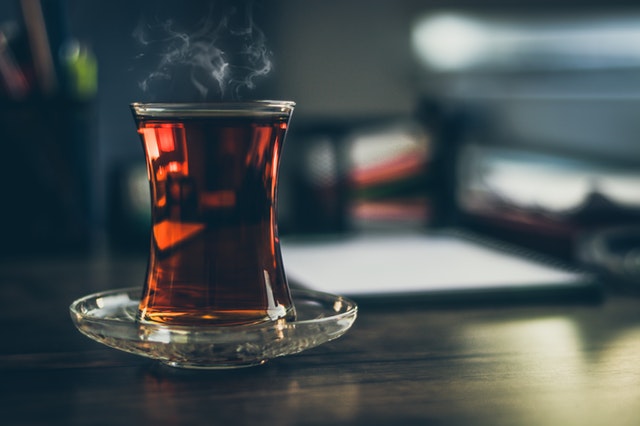In the past years, there has been an ever-increasing number of people who are fighting opiate and opioid addiction. In the middle of the last century, opiate addiction was only a problem among those who used opium first, and heroin later as recreational drugs. Heroin became very popular in the ’80s, but with the apparition of AIDS, its use started to decrease, turning it into some sort of “underground” drug. Back then, when we thought of addicts, we pictured them as poor people who lived in the streets and had to steal to get their next dose.
Nowadays the situation is completely different. Many opiate addicts are normal people that must deal with different illnesses or chronic pain, who take prescription opioid medications to treat their conditions.
But how did all this start?
U.S. Opioid Crisis
The number of heroin users has increased fivefold in the past decade in the US. But, illegal drugs are only part of the problem. Reportedly, 3 out of 4 new heroin users had a prior history of abuse of prescription painkillers.
In the 20th century, opioid medicines were typically prescribed to treat severe pain conditions, such as those caused by terminal cancer. But, since the 1990s doctors have been prescribing them increasingly to treat those who suffer from any type of chronic pain. Consequently, in the following two decades, the number of prescription opioids has risen significantly. As a result, since the year 2000 more than 300,000 people have died in America to an opioid overdose (licit or illicit). This is more than triple the number of deaths caused by drugs at the end of the last century, and this number continues to grow.
Subsequently, President Trump declared a national public health emergency in October 2017 to combat the opioid crisis.
Opiates vs. Opioids
Although the terms opiate and opioid have been used interchangeably to describe drugs that bind to the brain’s opioid receptors, they are not necessarily the same. So, what are the differences between the two?
- An opiate is directly derived from the poppy plant. Some examples include heroin, morphine, codeine, and opium.
- An opioid is a totally or partly synthetical drug that imitates the effects of an opiate. Hydrocodone, methadone, fentanyl, and oxycodone are opioids.
Basically, that is the only difference between the two types of substances. Otherwise, they are very similar.
How Do Opiates Work
To understand how opiates work, it’s important to note that our body produces “natural opioids” all the time. These body generated opioids are called “endogenous” opioids. One of the most famous endogenous opioids is endorphins. These opioids created by our system attach to the opioid receptors of the brain, namely the Kappa, Mu, and Delta receptors. When this happens, dopamine is released into the brain, making us feel euphoric. Also, dopamine will decrease any sensation of pain.
When chronic pain is present, the endogenous opioids are not enough to stop it. The opiates and exogenous opioids (those that are not produced by the body) also target the Mu, Kappa, and Delta receptors in the brain, but their effects in these receptors are stronger than those of the endogenous opioids, making them more effective on chronic pain.
The problem after prolonged use of opioids and opiates is that the users can develop a tolerance, so they will need to take bigger doses to get the effects that they seek.
Opiate Withdrawal Symptoms
Most users find it very hard to stop taking opiates or opioids due to the withdrawal symptoms that they experience. These symptoms usually start after a few hours after the last dose and can last from a few days to up to 4 weeks depending on the substance.
After a few hours of the last dose, addicts will typically develop the following symptoms:
- Anxiety
- Insomnia
- Restlessness
- Runny nose
- Muscle pain
- Sweats
- Fever
- Appetite loss
The above can last up to 2-3 days. The typical late withdrawal symptoms include:
- Nausea
- Vomiting
- Diarrhea
- Abdominal cramps
- Shivers
- Fatigue
- Hypertension
- Goosebumps
However, every person is different and the withdrawal symptoms, as well as their duration and intensity, will vary in each individual.
Natural Kratom Alternatives for Opiate Withdrawal
All things considered, when dealing with opiate withdrawal, many people look for natural remedies that can help them ease the dreaded symptoms.
Probably the most popular substance for opiate withdrawal is kratom. Kratom works by attaching to the opioid receptors on the brain, but it is not an opioid. Many kratom users report that this ancient plant has helped them reduce the intake of opiates or opioid painkillers, whilst giving them the energy to carry out their daily activities. But some people don’t have access to kratom where they live, or they do not tolerate it so well. Others want to look for a kratom alternative to avoid developing a tolerance.
Below we will explore some of the most popular kratom alternatives for opiate withdrawal.

Kava Kava
Probably one of the most popular kratom alternatives for opiate withdrawal, kava, or kava-kava’s popularity is increasing a lot recently. Some of kava’s properties that can help alleviate opiate withdrawal’s symptoms include:
- Anti-anxiety
- Energy booster
- Pain reliever
- Anti-stress
- Relaxing
Also, some users report that kava can be helpful to cope with alcoholism withdrawal symptoms.
Mitragyna Hirsuta
As you may tell from its name, mitragyna hirsuta is a close relative to kratom. Though its primary use is not to treat opiate withdrawal symptoms, it can help cope with the cravings. Also, mitragyna hirsuta has soothing and sedative properties and helps relieve discomfort.
Akuamma seeds
Although they’re not specifically intended to help with opiate withdrawal, some users report that they can be somehow effective when they alternate them with kratom. Their sedative and pain-relieving effects may help ease certain opiate withdrawal symptoms such as muscle pain and anxiety. Also, consider that a higher dose of akuamma seeds or powder could lead to respiratory depression, so always keep it under 6 grams.
Valerian Root
Valerian root’s calming and relaxing properties are well-known. This plant has been used for centuries in America and Europe to help aid sleep. Valerian root provides a mild relaxation effect, without the drowsiness that other substances may provoke.
Although valerian root is not very effective by opiate withdrawal, many people use it in combination with other herbs, such as passionflower, to treat the symptoms.



